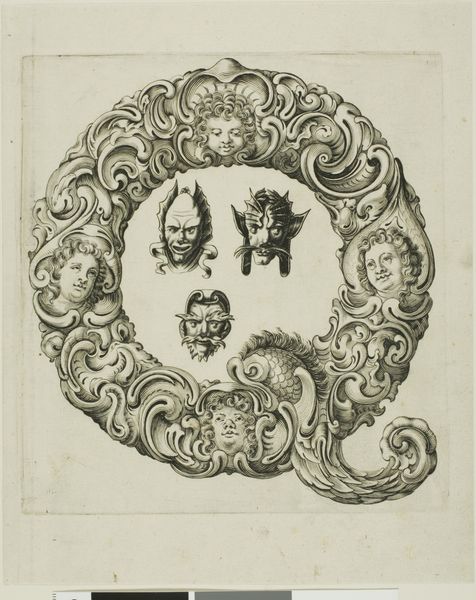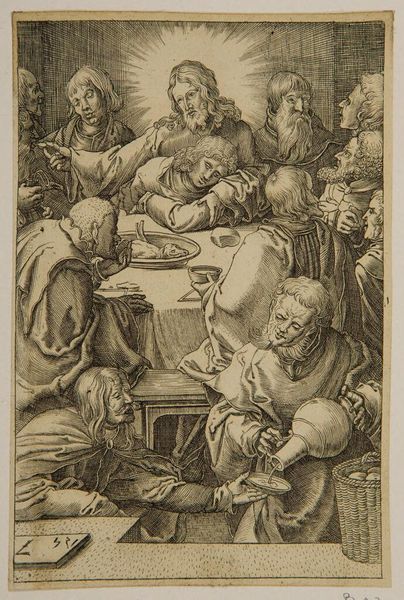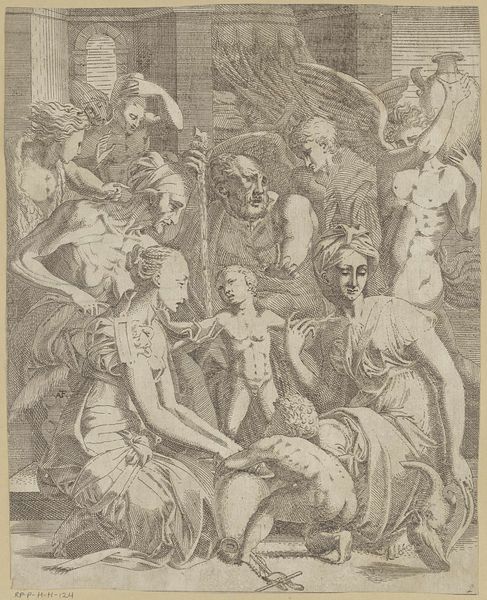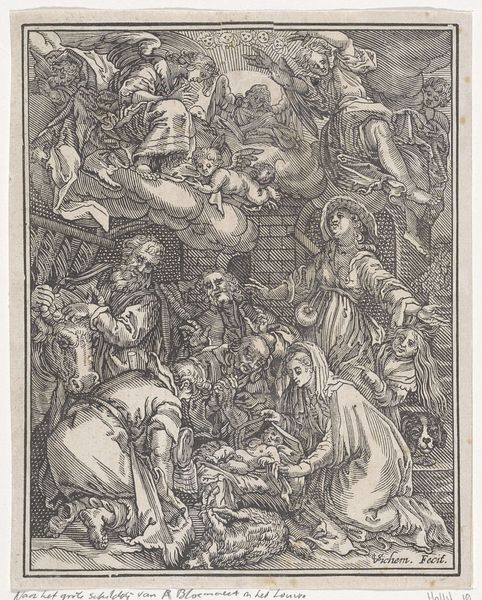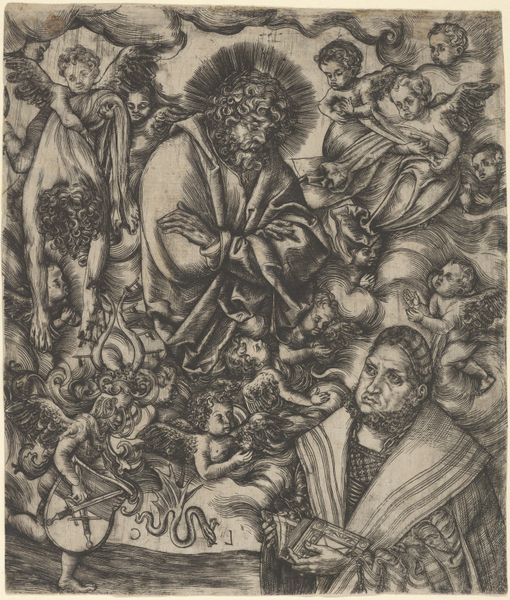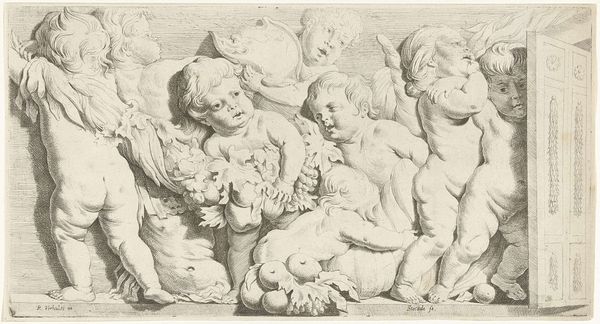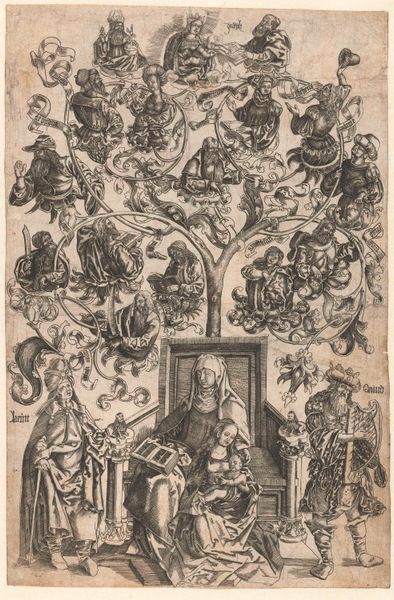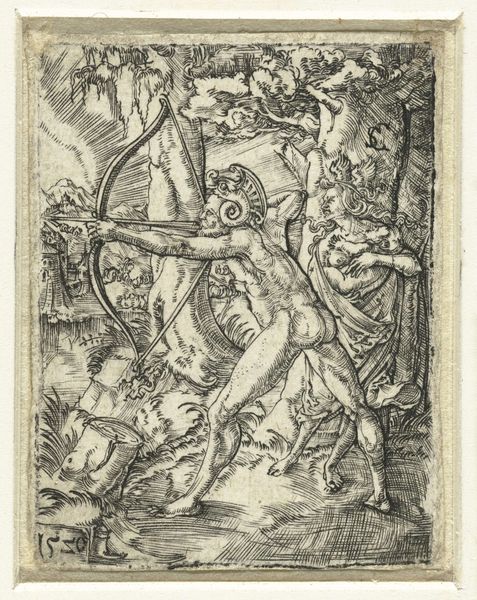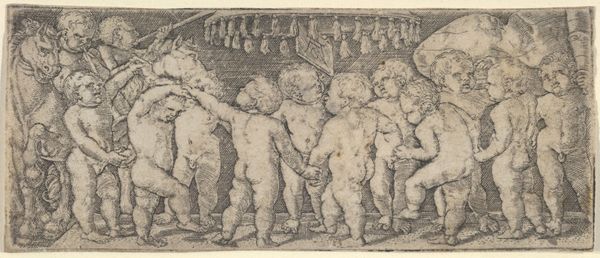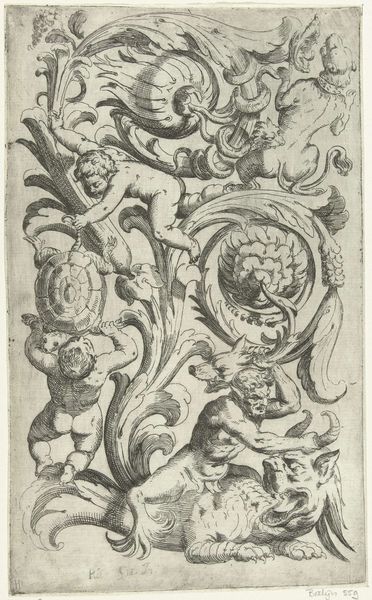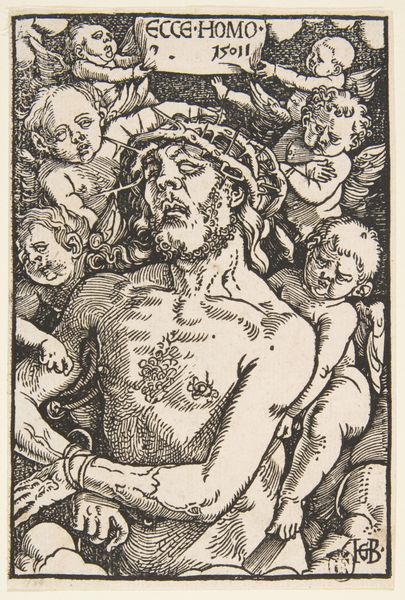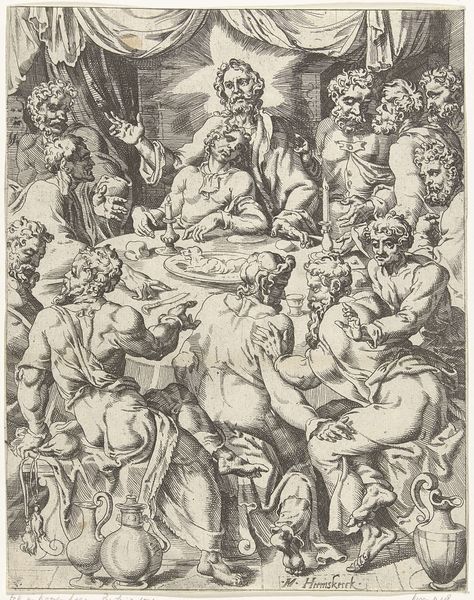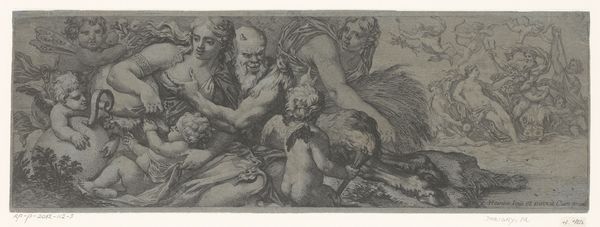
drawing, paper, ink
#
portrait
#
drawing
#
pen illustration
#
pen sketch
#
pencil sketch
#
figuration
#
paper
#
11_renaissance
#
ink
#
ink drawing experimentation
#
pen-ink sketch
#
pen work
#
sketchbook drawing
#
northern-renaissance
#
sketchbook art
Dimensions: height 167 mm, width 121 mm
Copyright: Rijks Museum: Open Domain
Curator: Let's take a look at "Study Sheet with Nineteen Heads" by Pieter Feddes van Harlingen, dating from around 1615. It’s currently housed here at the Rijksmuseum. Editor: My first thought is of the sheer density of these faces! It's like a social gathering rendered in miniature, a compressed multitude captured in ink on paper. Curator: Indeed. It's important to remember that during the Renaissance, these types of "head studies" were often exercises for artists, ways to practice portraying various emotions and expressions. There’s a focus here on typology and the representation of humanness, not any specific individual, allowing Feddes to capture a multitude within the singular sheet. Editor: I’m drawn to the process of it, though. You can almost see the artist experimenting, pushing the limits of the pen and ink to capture different textures – the rough beards, the smooth skin of the younger figures, the fabric draped across some of their heads. I'd argue it reveals so much about the artistic labor involved in mastering portraiture, the repetitive gestures honing his craft. Curator: And consider the possible socio-political dimensions here, if you will: each face unique and distinct. One cannot escape noticing those with seemingly melancholic features in comparison with their fellow countenances, which may elicit themes of early modern society—a sense of hierarchy. The varied depictions might represent differing social classes or temperaments within that societal context, revealing much about their shared conditions and experience of their reality. Editor: It also reads, to me, almost like a precursor to photographic portraiture or even a census record. The materiality speaks to the pre-industrial methods of mass communication—a sort of early print culture expressed with only a handful of materials that made a world of possibilities. Curator: What truly impresses me is the universality these faces seem to suggest, how despite the specificities of time and place, one finds relatable qualities mirrored within them across time—that deep seated humanity. Editor: Exactly, and understanding the laborious craft behind that—the artist’s repetitive act of drawing, the paper and ink’s journey into being something of purpose—grounds those lofty ideals into the tactile realm, into the means of its creation. Curator: A fascinating glimpse then, from both our vantage points, into the human condition as seen through the lens of art history, cultural significance, and the value of art itself! Editor: Definitely. It is compelling to think of the production process, the physical traces of Feddes' artistic process and his contribution in revealing humanity.
Comments
No comments
Be the first to comment and join the conversation on the ultimate creative platform.
